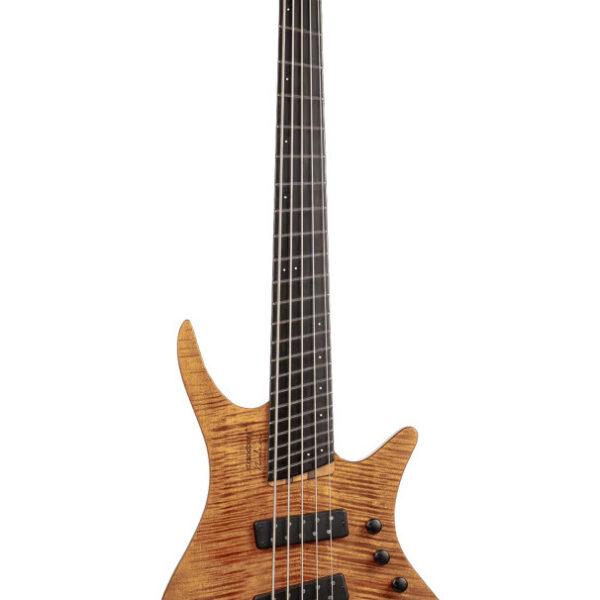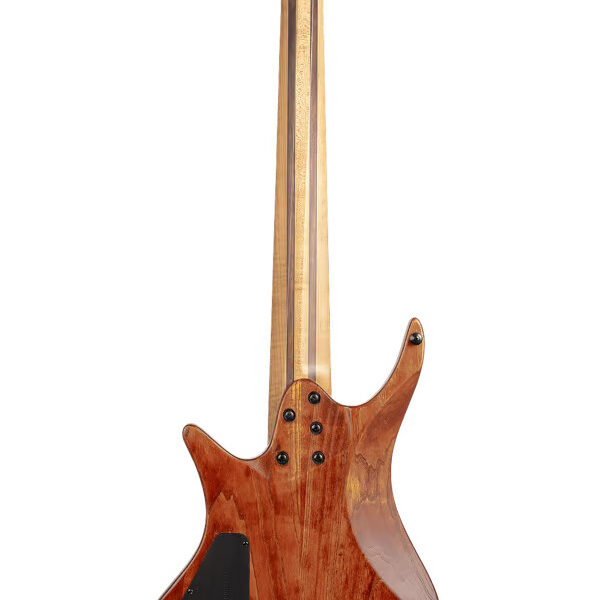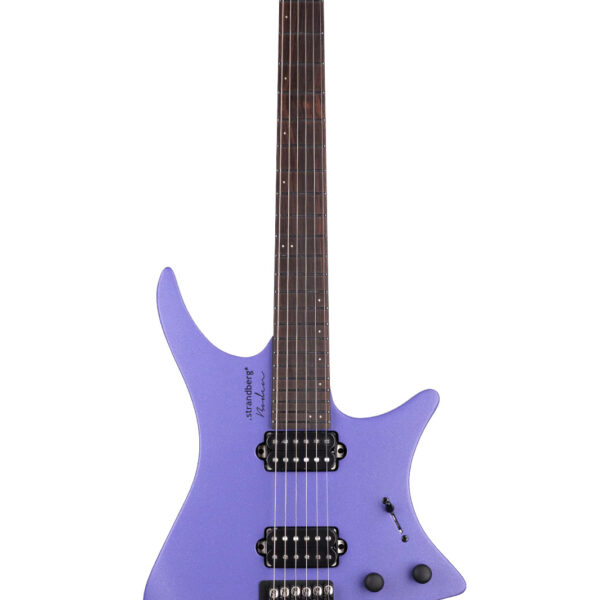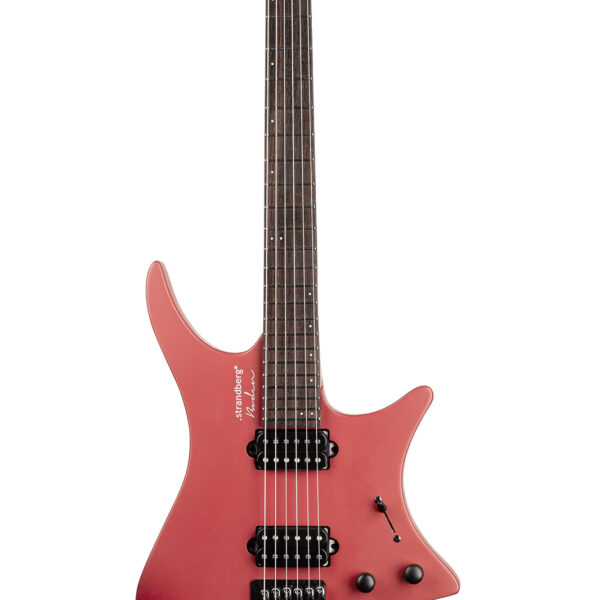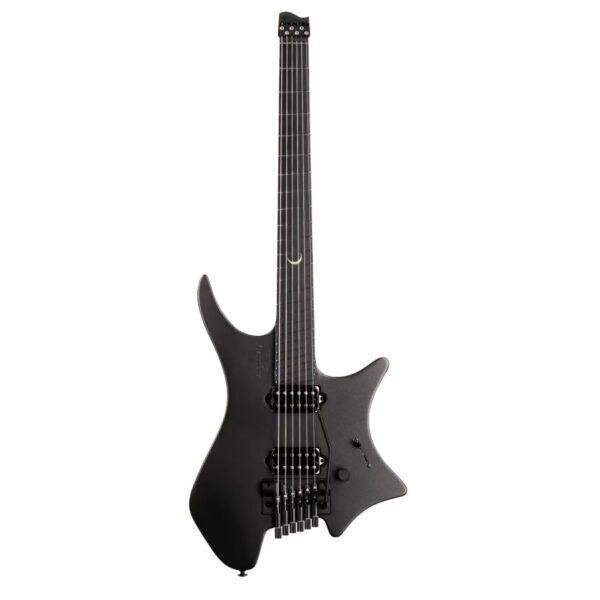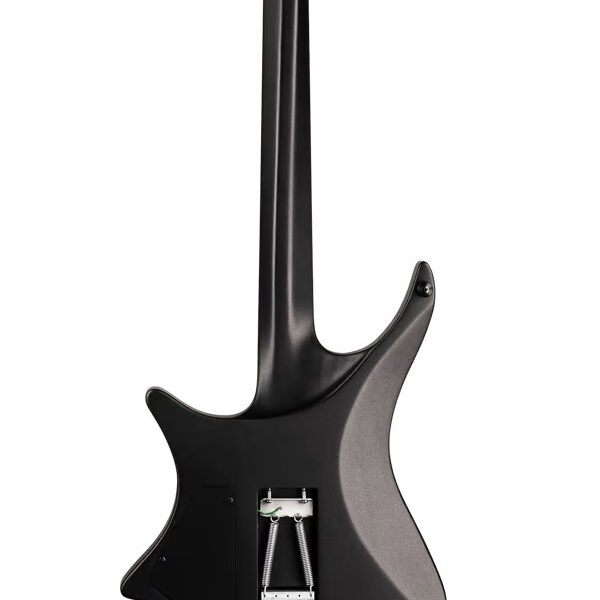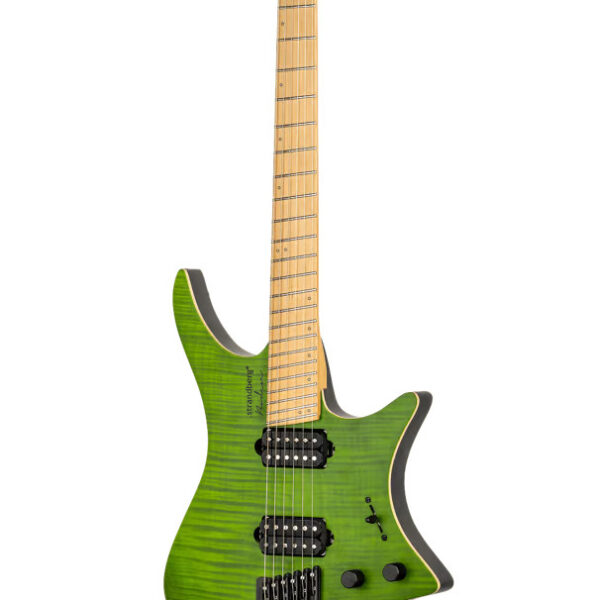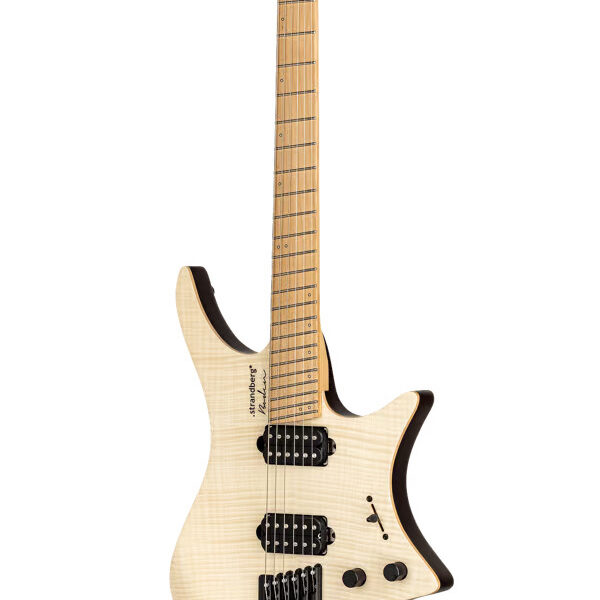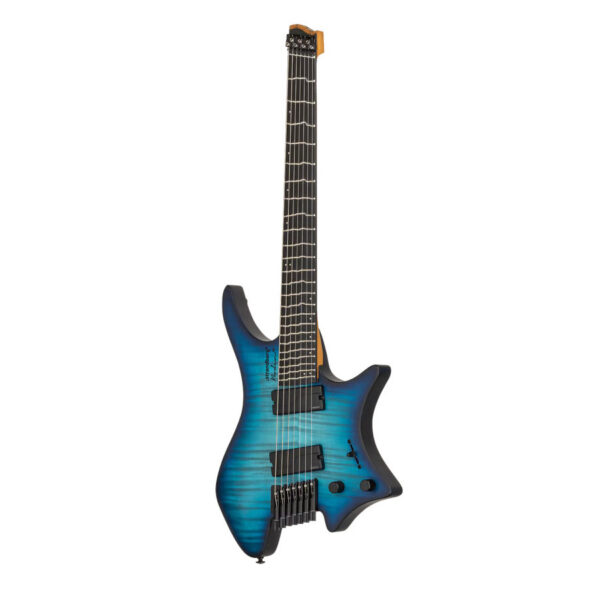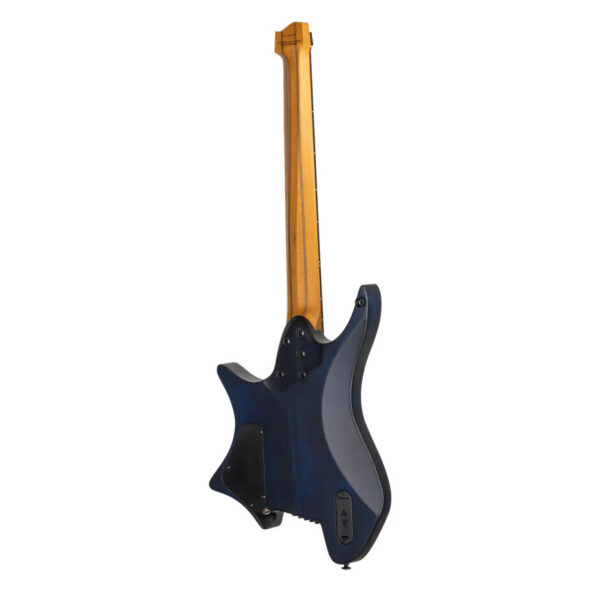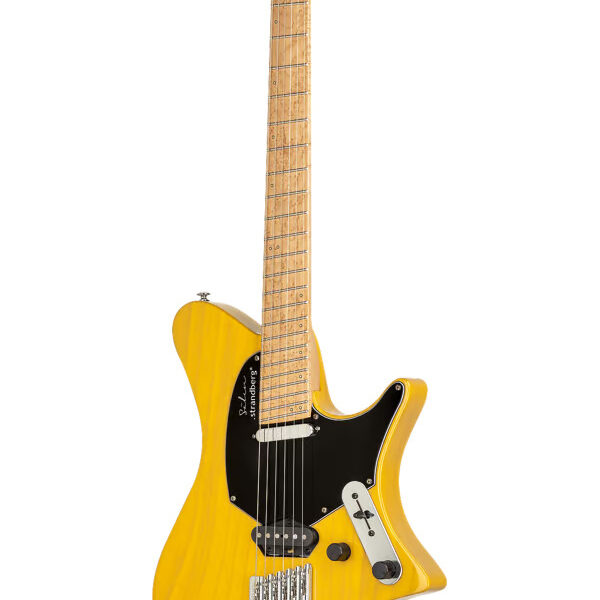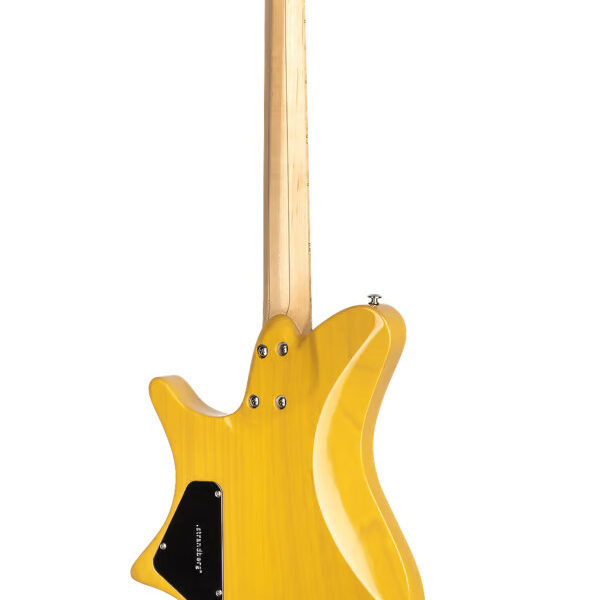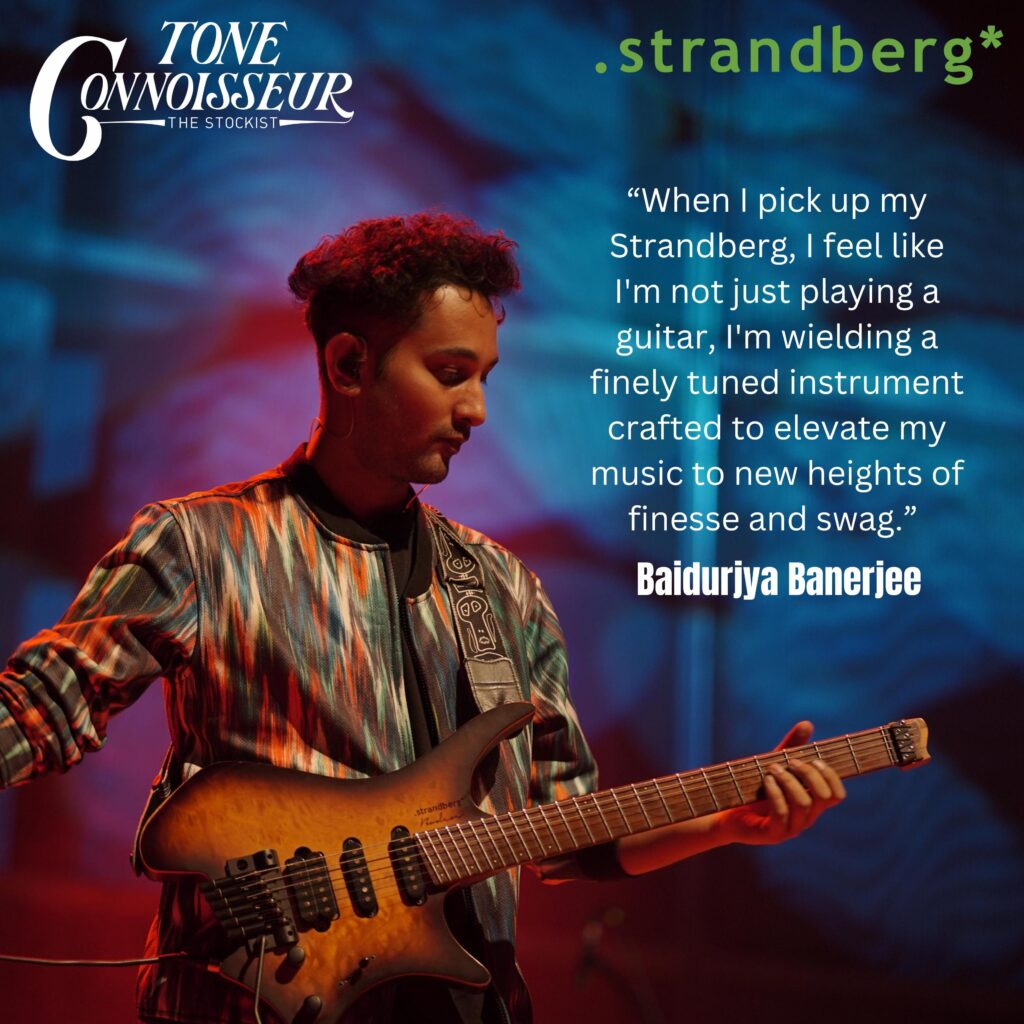
Baidurjya Banerjee, hailing from Kolkata, India, is a guitarist whose music spans genres like Neo-soul, RnB, Jazz Fusion, Progressive Rock, and incorporates Carnatic influences. He is renowned in the South Indian Indie Music scene for his distinctive guitar style and serves as the lead guitarist for both Since105 and Attva.
Let’s delve into why Baidurjya opted for Strandberg guitars as his preferred instrument for musical expression.
Q. What initially drew you to Strandberg guitars, and how did you first become aware of the brand?
Baidurjya: My journey with Strandberg guitars began during those solitary late-night sessions, lost in the mesmerizing world of Premier Guitar’s Rig Rundown series. It was a Tosin Abasi episode, where he unveiled his cherished 2013 Strandberg, the 8th creation from Ola Strandberg’s workshop. That headless, 8-string baritone, adorned with a fretboard extension, felt like an artifact from the future. It was unlike anything I had ever seen, a blend of innovation and artistry that spoke to my soul. The allure only deepened as I delved into the works of Plini and Sarah Longfield, both masterfully wielding their Strandbergs, weaving sonic tapestries that resonated with my musical sensibilities.
Q. Tell us about your guitar. Can you describe the specific features or innovations of Strandberg guitars that attracted you to them?
Baidurjya: My musical companion is the Strandberg Boden Standard 6 Tremolo Maple Quilt Bengal Burst, a breathtaking embodiment of both form and function. The first thing that captivated me was its aesthetics – the hypnotic allure of the Bengal quilt veneer. But beyond its visual splendor lies a meticulous craftsmanship that marries Basswood with a solid Maple top and Maple fretboard, a divine trinity of tonewoods that sings with warmth, sustains with grace, and punches with authority. And let’s not forget the tremolo system, a marvel of engineering that defies the laws of physics, ensuring that each dive bomb leaves its mark without ever betraying the tuning stability.
Q. How did your experience playing a Strandberg guitar differ from playing more traditional models?
Baidurjya: Transitioning from the familiar embrace of Les Pauls and Kramer guitars to the ergonomic marvel that is the Strandberg was akin to stepping into a new dimension. The weightlessness of the instrument was a revelation, especially during those marathon performances that define the life of a touring musician. Where once fatigue would creep in, now there was only freedom, allowing me to lose myself in the music without the burden of physical strain.
Q. Did you face any challenges or adjustments when transitioning to playing a Strandberg guitar, considering its unique design?
Baidurjya: Embracing Strandberg’s unique design was like learning a new dialect of a beloved language – unfamiliar yet strangely intuitive. The “endurneck” profile cradled my hand in a way that felt immediately familiar, but mastering the nuances of the floating tremolo system required a delicate touch. Yet, with each string change, each adjustment, a deeper bond formed, until the Strandberg felt like an extension of my very being.

Q. What role did the ergonomics and comfort of a Strandberg guitar play in your decision to invest in one?
Baidurjya: The decision to invest in a Strandberg wasn’t just about acquiring a new instrument; it was about forging a connection, a symbiotic relationship between player and guitar. The ergonomic design was a revelation, offering not just comfort, but liberation. Whether onstage or in the studio, the Strandberg molded to my body like a second skin, empowering me to explore new sonic territories with unwavering confidence.
Q. Could you share any memorable experiences or performances you’ve had while using your Strandberg guitar?
Baidurjya: Oh, where do I begin? Every performance with my Strandberg has been a journey unto itself, a tapestry woven from moments of pure sonic ecstasy. But if I had to pick one, it would be the 2024 Europe and UK tour, where the boundaries between performer and audience blurred into oblivion. With my wireless Strandberg in hand, I ventured into the crowd, dancing and shredding amidst a sea of euphoria. It wasn’t just a performance; it was a communion of souls, a testament to the transformative power of music.
Q. In what ways do you feel that owning a Strandberg guitar has influenced your playing style or musical creativity?
Baidurjya: Owning a Strandberg isn’t just about playing music; it’s about redefining what’s possible. The seamless playability has unlocked new dimensions in my playing, allowing me to effortlessly navigate intricate passages that once seemed insurmountable. And the tonal palette it offers – from shimmering cleans to earth-shattering distortion – has expanded my sonic vocabulary, enabling me to paint with colors I never knew existed.
Q. How would you describe the tonal characteristics of a Strandberg guitar compared to other guitars you’ve played?
Baidurjya: Strandberg guitars aren’t just instruments; they’re conduits of sonic alchemy. The HSS configuration of my Boden delivers a kaleidoscope of tones, from the crystalline clarity of a spring morning to the thunderous roar of a raging tempest. And the consistency it maintains, regardless of climate or conditions, is nothing short of miraculous – a testament to the unwavering craftsmanship that defines the brand.

Q. For aspiring musicians considering investing in a Strandberg guitar, what advice or insights would you offer based on your own experience with the brand?
Baidurjya: To my fellow dreamers and seekers of sonic enlightenment, I offer this counsel: let your heart be your guide. A Strandberg isn’t just a guitar; it’s a gateway to a world of infinite possibilities. But heed this warning – tread not the path of trends, but of truth. Invest not in what’s fashionable, but what speaks to your soul. For in the embrace of a Strandberg, you’ll find not just an instrument, but a kindred spirit, ready to embark on a journey of discovery alongside you.
Q. Many musicians cite the weight and balance of a guitar as crucial factors in their performance. How does Strandberg address these concerns, and how does it affect your stage presence and endurance during long gigs?
Baidurjya: The weightlessness of a Strandberg isn’t just a convenience; it’s a revelation. Gone are the days of sore shoulders and strained muscles, replaced by a sense of liberation that allows me to pour every ounce of my being into each performance. Whether on stage for five minutes or five hours, the Strandberg remains steadfast, a steadfast companion that never falters.
Q. The guitar-building industry is known for its rich heritage and tradition. What do you think sets Strandberg apart from more conventional brands, and how do you see the company influencing the future of guitar design?
Baidurjya: Strandberg isn’t just a brand; it’s a beacon of innovation in a sea of tradition. By challenging the status quo, they’ve reshaped the landscape of guitar design, ushering in a new era of possibility. As they continue to push the boundaries of what’s possible, I have no doubt that they’ll inspire a new generation of builders and players to dream bigger, reach higher, and dare to defy convention.
Q. How do you think Strandberg guitars have contributed to pushing the boundaries of modern music, and do you foresee any new developments or innovations from the brand in the future?
Baidurjya: Strandberg guitars aren’t just tools; they’re catalysts for change. By embracing stability in a headless world, they’ve opened doors to new sonic territories, inspiring artists to push the envelope and redefine what’s possible. And as for the future? Well, if history is any indication, I have no doubt that we’ll see even more groundbreaking innovations from the minds of Ola Strandberg and his team.
Q. Finally, if you had to sum up your experience with Strandberg guitars in just a few words, what would you say to aspiring musicians considering making the switch?
Baidurjya: To those on the cusp of greatness, contemplating the leap into the unknown, I offer this simple truth: embrace the unknown, and let your music soar. For in the embrace of a Strandberg, you’ll find not just an instrument, but a partner in creativity, a conduit for expression, and a beacon of possibility. So take the leap, my friends, and let your music fly.

